Simon,
I'm currently experimenting with near field sub(s) and how to best integrate with fronts and surrounds.
First I'm looking at multiple points within the listening area and try to determine a common crossover frequency for all satellites. Optimizing multiple crossover frequencies is probably not practical for such a manual approach.
If there are any wide notches that correspond to peaks in the excess phase group delay I'm optimizing locations of the speakers.
Then I'm applying rather agressive equalization based on the spatial magnitude average of each speaker in order to match satellites and sub(s) to a common slope. The excess group delay graph helps avoiding equalization of frequency regions that can't be equalized.
I'm currently experimenting with near field sub(s) and how to best integrate with fronts and surrounds.
First I'm looking at multiple points within the listening area and try to determine a common crossover frequency for all satellites. Optimizing multiple crossover frequencies is probably not practical for such a manual approach.
If there are any wide notches that correspond to peaks in the excess phase group delay I'm optimizing locations of the speakers.
Then I'm applying rather agressive equalization based on the spatial magnitude average of each speaker in order to match satellites and sub(s) to a common slope. The excess group delay graph helps avoiding equalization of frequency regions that can't be equalized.
At the very least I would use excess group delay to see what was EQ'able and what was fundamentally not EQ'able, but I can't see why it wouldn't help with multi-sub positioning by allowing you to see when you have achieved a near minimum-phase response that can then be successfully EQ'ed.
Seems that the author of REW would very much agree, noting also that cause of bumps in excess GD graph are hard to determine, they just indicate significant phase/timing deviations at given frequency which will stay even when amplitude is EQed.
For YOU. And maybe for Earl and others. It is like that in the real world for ME. I hear the direction of bass, so I like stereo bass for playback. If you don't - all the better! You don't have to worry about stereo bass.
Pano, am i right you are from Hawai ?
I watched a documentation in german TV yesterday, showing
first colonization of the south pacific world of islands ...
Polynesian sailors had to be excellent navigators and they had
to get along with rapidly changeing weather phenomena, using
only small boats and catamarans.
I can imagine that besides navigation due to stars, observation
of naval animals, birds etc., also excellent hearing in the low frequency
region might have been be an advantage cultural and evolutionary.
If your ancestors may come fom polynesia, maybe this could
be a hint for this gift, just if so ...
I know, this is pure speculation, but would be interesting if that
gift is more widely spread among people used to long distance boat
navigation: On outdoor scale only low frequencies are carried far ...
Maybe weatherfronts, breakwater, horn signalling etc. can be heard
and the direction estimated well by those tho are well used to it
over many generations.
Kind Regards
Last edited:
There are multiple causes of dips in this frequency range - the 2nd order floor ceiling mode seems to be the biggest contributor, (for an 8 foot ceiling) but you are right that boundary cancellation from front (behind the speakers) and side wall also contribute and can fall near the same frequency depending on speaker location.Could it be null from summing with out-of phase reflections from being close to rear wall (at 120-140Hz monopoles are omnidirectional), and/or side walls? 120-140Hz equals 2.45-2.85m wavelength, its half (180 out of phase or inverse) being 1.2-1.4m. If thats the reason then moving speakers or varying baffle size must shift this dip to different frequency and level. F.e. to shift the dip to more convenient sub leveling/crossing at 80Hz you may need to move speakers almost twice the distance from walls. Please validate -am I right or missed it?
The effects of the floor/ceiling mode can be greatly reduced by having the woofer in the main speaker right at the floor. The worst possible height for the woofer is 1/4 of the ceiling height - eg 2 feet for an 8 foot ceiling as that will give the worst cancellation from this mode. (One reason I prefer the woofer on a 3 way to be close to the floor and cross over above 200Hz)
Adjusting the height of the woofer in the main speaker doesn't change the frequency of the notch (that depends on the ceiling height) it only changes the depth of the notch.
On the other hand moving the speaker closer/further from the two nearest walls changes the frequency of the notches caused by those walls as they are boundary cancellation phenomena, not modes.
All three notches are cumulative and if they overlap within a 1/3rd of an Octave or so can become very deep.
If you have BOTH a floor level woofer on the main speakers and you bring the speakers a lot further out out into the room you can push the main boundary cancellation notches low enough in frequency that a normal sub arrangement can deal with them. (There will be less obvious notches at the 2nd harmonic of the boundary cancellation notches though, so if you pulled it out twice the distance you would still have a smaller notch at the same frequency as before plus the big notches below 80Hz that you just created)
Such an arrangement is entirely dependant on subs for a decent bass response though due to massive mid bass cancellation, and would be too far out in the room for WAF or achieving a sufficiently large stereo triangle unless you had a pretty large room. (European living rooms need not apply)
Much easier in my opinion to use a floor mounted woofer design on the main speaker, keep the speakers in their normal locations (optimised for a combination of imaging and aesthetics / WAF) and add a small flanking woofer beside each main speaker.
Last edited:
Those "modal smoothing" activities can IMO only be handled on a
statistical base, especially as you go towards higher order modes,
which is the case in the living rooms under question at frequencies
>100Hz.
Especially when adressing the range 100 ... 200Hz, which for many
rooms may be from "around Schroeder" into the "transition region"
(EU "Stone-Bunker"), distributed sources are of advantage.
But distribution is no guarantee for smooth frequency response
at a specific seat for a specific speaker position.
It is to my experience of advantage to have one source splitted into 2
sources (at least), given they have sufficient separation.
Also there should prefereably be a separational component due to all
planes y, y and z.
The pictures 1...6 show 3 pairs of "single vs. distributed" sources,
each pair having the same "balance point" in space.
The odd is: You cannot rely on distribution solely.
Speaker and listening position will have to be optimized still, it is just
the probabilty of finding a good combination (having smooth FR) is higher,
when a distributed LF source is used.
Those problems cannot very well be disussed IMO by strict
"do this to get that result" rules, because the problem is a stochastical
one by its nature.
_________________
p.s. Listeners living in houses made from wood or having dry wall constructions
- prefereably with some inherent damping - may ask themselves:
What are these guys talking about ?
The "stone bunker" ist really different to the "wooden house", as the transitional
region might not even be existent in the latter.
Kind Regards
statistical base, especially as you go towards higher order modes,
which is the case in the living rooms under question at frequencies
>100Hz.
Especially when adressing the range 100 ... 200Hz, which for many
rooms may be from "around Schroeder" into the "transition region"
(EU "Stone-Bunker"), distributed sources are of advantage.
But distribution is no guarantee for smooth frequency response
at a specific seat for a specific speaker position.
It is to my experience of advantage to have one source splitted into 2
sources (at least), given they have sufficient separation.
Also there should prefereably be a separational component due to all
planes y, y and z.
The pictures 1...6 show 3 pairs of "single vs. distributed" sources,
each pair having the same "balance point" in space.
The odd is: You cannot rely on distribution solely.
Speaker and listening position will have to be optimized still, it is just
the probabilty of finding a good combination (having smooth FR) is higher,
when a distributed LF source is used.
Those problems cannot very well be disussed IMO by strict
"do this to get that result" rules, because the problem is a stochastical
one by its nature.
_________________
p.s. Listeners living in houses made from wood or having dry wall constructions
- prefereably with some inherent damping - may ask themselves:
What are these guys talking about ?
The "stone bunker" ist really different to the "wooden house", as the transitional
region might not even be existent in the latter.
Kind Regards
Attachments
-
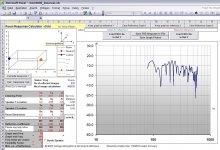 02_Sources1_Range80Hz-600Hz.JPG178.5 KB · Views: 351
02_Sources1_Range80Hz-600Hz.JPG178.5 KB · Views: 351 -
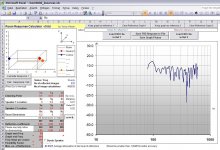 02_Sources2_Range80Hz-600Hz.JPG178.1 KB · Views: 283
02_Sources2_Range80Hz-600Hz.JPG178.1 KB · Views: 283 -
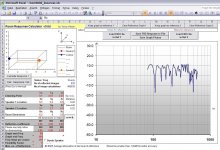 04_Sources1_Range80Hz-600Hz.JPG177.5 KB · Views: 281
04_Sources1_Range80Hz-600Hz.JPG177.5 KB · Views: 281 -
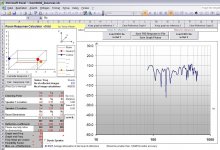 04_Sources2_Range80Hz-600Hz.JPG177.6 KB · Views: 286
04_Sources2_Range80Hz-600Hz.JPG177.6 KB · Views: 286 -
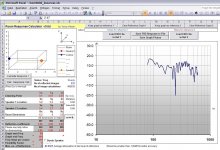 06_Sources1_Range80Hz-600Hz.JPG176.4 KB · Views: 279
06_Sources1_Range80Hz-600Hz.JPG176.4 KB · Views: 279 -
 06_Sources2_Range80Hz-600Hz.JPG177 KB · Views: 93
06_Sources2_Range80Hz-600Hz.JPG177 KB · Views: 93
Last edited:
Not sure if this is from the same day, so speakers may have a slight different position, but should be quite similar.Thanks for that, that's a very good result between 100-200Hz indeed, if it was measured at the listening position. 🙂 Did you keep a before measurement as well ?
Here's another example which I'm working with presently. Same room but another pair of front speakers. They both have a dropped level below 200 Hz. Maybe a could lift it with EQ, haven't tried.
Adding the same midbasses measured both channels. Here I'm little stuck moving them due to a rack on the inside. So response isn't quite as good yet. And I'm uncertain if the midbasses will keep ut this response at a higher volume being bandpasses.
And then adding a third subwoofer in the rear of the room crossed over at 80 Hz and changed the phase to 180 degrees. A little flatter response. I need to work more at it. Earl will soon get an e-mail from me....
Pictures of the room and setup. Small room with a sloping ceiling is hard. Playing on the long side of the room in front of the windows has it's advantages, but gives me some serious standing waves. We'll see. I'm not a perfectionist when it comes to surround.
Attachments
-
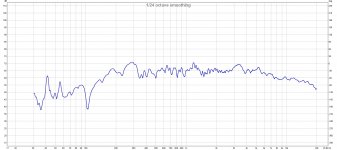 right speaker alone.jpg207.3 KB · Views: 438
right speaker alone.jpg207.3 KB · Views: 438 -
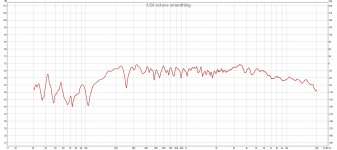 left speaker alone.jpg209.3 KB · Views: 440
left speaker alone.jpg209.3 KB · Views: 440 -
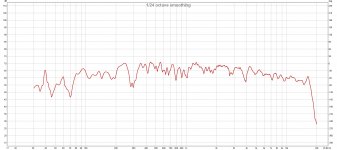 left channel.jpg212.1 KB · Views: 429
left channel.jpg212.1 KB · Views: 429 -
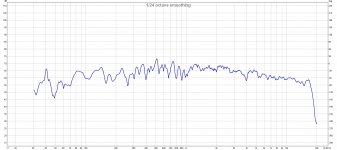 right channel.jpg211 KB · Views: 155
right channel.jpg211 KB · Views: 155 -
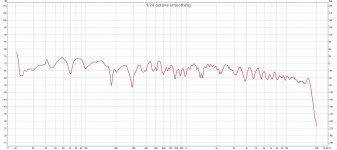 both channels with midbasses.jpg210.2 KB · Views: 433
both channels with midbasses.jpg210.2 KB · Views: 433 -
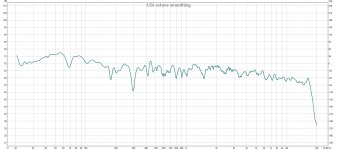 three subs.jpg204.8 KB · Views: 440
three subs.jpg204.8 KB · Views: 440 -
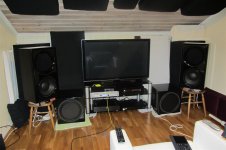 Abbey and subs 001 (Medium).JPG97.3 KB · Views: 449
Abbey and subs 001 (Medium).JPG97.3 KB · Views: 449 -
 Abbey and subs 003 (Medium).JPG88.3 KB · Views: 447
Abbey and subs 003 (Medium).JPG88.3 KB · Views: 447
By the way, a lot of what I know about audio I've learned here at diyaudio, and this topic in particular. Therefore I guess this may be the most appropriate place to inform you that I recently started an audio company with two other guys: Synergy Acoustics.
We'll be offering a unidirectional monitor loudspeaker, separate bass speakers / subwoofers, a power amp, and a preamp with DSP. In line with what we have been discussing in this topic, Synergy Acoustics emphasizes that good sound starts with the loudspeaker-room interface. Our products are all aimed at providing great sound in 'real' rooms, although of course they'll sound great in dedicated studio's as well. We're currently busy starting up. Only when everything is ready will our website go live.
Congratulations! Judging from website looks like your speakers will have openings in their sides. Was the design goal smooth directivity using leaky box and controlled cardioid pattern through all midrange?
The amplitude of the standing wave is unchanged, so the variation in response along the room has not been made worse. The response at this frequency is up 6dB but the same would happen if you stacked the second pair of subwoofers on top of the first pair at the front.
The point is some modes are eliminated and some are not affected at all, relative to the over all SPL increase of doubling the number of woofers. When one part of a problem is solved its easy to say "but it doesn't fix everything". Again its a case of don't let perfect be the enemy of good. 😉
I think that you are twisting the words around to the point where they don't make sense. If "the response at this frequency is up 6dB" then the "amplitude" is changed. It doesn't matter if this is the same as stacking a pair of subs.
I guess that I simply don't agree with you on this point.
Thanks for sharing!
It's good to see David's interview sparked this topic back to life again 🙂 . I guess the subject will never cease to be relevant.
By the way, a lot of what I know about audio I've learned here at diyaudio, and this topic in particular. Therefore I guess this may be the most appropriate place to inform you that I recently started an audio company with two other guys: Synergy Acoustics.
We'll be offering a unidirectional monitor loudspeaker, separate bass speakers / subwoofers, a power amp, and a preamp with DSP. In line with what we have been discussing in this topic, Synergy Acoustics emphasizes that good sound starts with the loudspeaker-room interface. Our products are all aimed at providing great sound in 'real' rooms, although of course they'll sound great in dedicated studio's as well. We're currently busy starting up. Only when everything is ready will our website go live.
Congrats on that development! Hope you guys will be able to make this dream come true. 🙂
If you have an 8 foot high ceiling you almost certainly have a notch in this frequency region as it primarily comes from the 2nd order floor to ceiling mode. Maybe in the US many houses have higher or vaulted ceilings that would push it lower in frequency but in Europe unless you live in a mansion you have an 8 foot high ceiling, so the problem frequency is pretty standardised.
I'm not saying that every room has a problem in the 100-160Hz range, but all of the ones I've measured with 8 foot ceilings and just two main speakers have, some as deep as 15-20dB and up to 1/3 octave wide.
A main speaker with the woofer (crossed over above 200Hz) at or near the floor helps quite a bit but isn't a complete solution, to fully solve it you need another woofer that is horizontally or lengthwise displaced from the main.
DBmandrake,
Assuming a passband of 50-300 Hz, what is the optimal (and worst) mounting height on the baffle from the floor relative to ceiling height for a single woofer? I assume 1/4th (i.e. 60 cm in your example with standard European rooms) is the worst...?
And what if you have two woofers, what are their optimal height positions respectively. Would one at 1/4th and the other one at 1/2th (i.e. at 60 and 120 cm respectively in your example, with the M and T in between the two woofers) sort of smooth each other out (wrt to the floor-to-ceiling modes)?
Does this depend at all on the listening height, say at 1.0 m up in a 2.4 m high room?
Ok, time to toss you a curve ball. 🙂
Everyone is so heavily focused on the multi-sub approach that you're missing an interesting option, i.e. a bass eater. (Or several)
Active mic'ed sub that will play everything it "hears" in reverse, thus canceling standing waves along it's axis. Low pass filtered obviously...
Why not play mains full range, add a couple of flanking helper-subs a bit into the room along the side walls and a couple of bass eaters in the rear corners?
Or why not try without the subs? If the mains have decent bass capabilities they should do ok on their own.
Everyone is so heavily focused on the multi-sub approach that you're missing an interesting option, i.e. a bass eater. (Or several)
Active mic'ed sub that will play everything it "hears" in reverse, thus canceling standing waves along it's axis. Low pass filtered obviously...
Why not play mains full range, add a couple of flanking helper-subs a bit into the room along the side walls and a couple of bass eaters in the rear corners?
Or why not try without the subs? If the mains have decent bass capabilities they should do ok on their own.
Last edited:
This still sounds like a case of the multi sub approach. The double bass array being the 'passive' version of this. Maybe with enough of these they could remove all reverberant bass, and i wonder whether setting the gain of these could/would tame the modal response without removing so much of the energy.
You have to be careful with those bass eater subs. If you turn them up too high, they feed back. But remember, it's negative feedback. Pretty soon you end up sucking the entire room back into the power grid. If you put the proper fuse or circuit breaker on them, this will not happen all at once - fortunately. But if used over a long period the entire room will vanish. Be careful!
When multiple subs are setup correctly they are in fact "bass eaters" where they need to be. For example: if turning on a sub reduces the SPL in some bands in the room then it is absorbing the bass in those bands. This is exactly what you want - reduce the peaks and enhance the nulls. This is precisely what happens with multiple subs. Every setup that I have done has this feature for some sub over some band. A sub that only absorbs sound is a very inefficient way to do things.
The PRO for the bass-eater is not needing a input from the preamp which means no cable running across the room. It's just easy as a drop in addition. And yes, the objective is removing standing waves, making the bass tighter, not adding anything to the frequency response. EQ'ing the FR becomes easier when you eliminate room modes...
But hey, I wouldn't mind running a multi sub system either. A bass eater is just another acoustic tool. Btw it doesn't absorb sound, it only cancels room resonances i.e. getting rid of reflections from the walls.
But hey, I wouldn't mind running a multi sub system either. A bass eater is just another acoustic tool. Btw it doesn't absorb sound, it only cancels room resonances i.e. getting rid of reflections from the walls.
The PRO for the bass-eater is not needing a input from the preamp which means no cable running across the room. It's just easy as a drop in addition. And yes, the objective is removing standing waves, making the bass tighter, not adding anything to the frequency response. EQ'ing the FR becomes easier when you eliminate room modes...
But hey, I wouldn't mind running a multi sub system either. A bass eater is just another acoustic tool. Btw it doesn't absorb sound, it only cancels room resonances i.e. getting rid of reflections from the walls.
You cannot eat them all. With inverted rears you can eat up some orders of longitudial axial mode (which are usually the strongest), but there are still transverse, vertical axials plus tangential and oblique modes you can perhaps only change but not really flatten this way. Here is a nice room mode calculator and visualization:
Room modes calculator calculate 3 modes - app rectangular room control room eigenmodes eigenfrequencies standing waves room acoustic node equation formula frequency - sengpielaudio Sengpiel Berlin
I'd say multiple distributed subs aren't eaters, they are rather flatteners due differences in their physical spacing and at the same time bass donors by adding extra SPL, so I'd prefer this method. Inverting rears could be beneficial in some scenario, worth trying. Toole in his book also points out dipole subs placed in the middle of side walls facing longitudionally. In my opinion they could be combined with four more monopole subs in the corners gaining nice overall longitudial axial mode cancellation flatness.
Regarding "tightness", I think the term is usually used to refer to well-controlled (Low Qts) bass amplifier-driver-cabinet combination which responds to input signal with fast-transient response and don't have pronounced after-ringing aka drone "effect". But as room modes are also resonant by their nature and having their own build-up and decay time in respect to original signal, and, therefore introducing some delay (am I right?) then yes, definitely "tightness" may be appropriate term to describe effect of such speaker set that can reduce room excitations alone or make them significantly flatter and faster decaying. "Modal tightness" perhaps would be more precise term used to distinguish from aforementioned one. May anyone suggest better one?
How about keeping bass topic narrowed to "stereo vs mono" or "directional vs omni" bass to keep up with the main topic - directivity?
The PRO for the bass-eater is not needing a input from the preamp which means no cable running across the room.
IMO wireless sound transfer is getting much more affordable and a more simple approach for cable elimination.
Regarding "directional vs omni" bass here is interesting analysis by member Elias:
Elias Pekonen Home Page - Dipole Bass vs Monopole Bass
He puts emphasis on accurate reproduction of LFs modulated by LFs as means of significant bass quality factor and presumes that: "The information in the real life music signal is composed by signal modulations. Without the modulation signal has no information, it would not be music. A reproduction system providing more accourate transmission of the signal modulations is to be considered a better system for music reproduction."
After measurements and analysis using wavelets he concludes that "In a small room dipole loudspeaker reproduces the temporal structure of the bass signal better than the monopole loudspeaker. At most of the analysis frequencies the monopole bass loses the ability to reproduce the modulated signal."
If he is right, what I don't get is the possible cause of it. Is it related to dipoles typically exciting significantly less of room modes compared to monopoles (less excited room makes less "smearing" of the precious bass "reefs"), or dipoles usually having better transient response (lower Qts), or both?
Elias Pekonen Home Page - Dipole Bass vs Monopole Bass
He puts emphasis on accurate reproduction of LFs modulated by LFs as means of significant bass quality factor and presumes that: "The information in the real life music signal is composed by signal modulations. Without the modulation signal has no information, it would not be music. A reproduction system providing more accourate transmission of the signal modulations is to be considered a better system for music reproduction."
After measurements and analysis using wavelets he concludes that "In a small room dipole loudspeaker reproduces the temporal structure of the bass signal better than the monopole loudspeaker. At most of the analysis frequencies the monopole bass loses the ability to reproduce the modulated signal."
If he is right, what I don't get is the possible cause of it. Is it related to dipoles typically exciting significantly less of room modes compared to monopoles (less excited room makes less "smearing" of the precious bass "reefs"), or dipoles usually having better transient response (lower Qts), or both?
It is not really true that a bass-eater removes the modes. It changes them that is for sure and it does some absorption, but I would bet that there are still the same number of modes. A bass-eater, if it works perfectly, forces the pressure to be zero at a point in the room. This new room would still have modes but the solutions would be different that when one calculates the modes with a boundary condition of zero pressure gradient.
This differs from the Bass array in that there the subs are phased such that there is no reflection and hence the modes are truly eliminated. these are very different things.
This differs from the Bass array in that there the subs are phased such that there is no reflection and hence the modes are truly eliminated. these are very different things.
- Status
- Not open for further replies.
- Home
- Loudspeakers
- Multi-Way
- What is the ideal directivity pattern for stereo speakers?